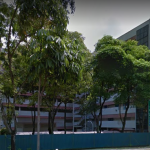Office usage and demand will evolve according to corporates’ changing needs in the COVID-19 world
- Office usage and demand is here to stay but employee experience will be different, says JLL
 Corporations in Asia Pacific are re-examining their office usage and commercial real estate strategies amid government-imposed lockdowns and work-from-home arrangements resulting from the COVID-19 pandemic.
Corporations in Asia Pacific are re-examining their office usage and commercial real estate strategies amid government-imposed lockdowns and work-from-home arrangements resulting from the COVID-19 pandemic.
According to JLL’s data, leasing activity softened with global volumes 22% lower than in Q1 2019 as deals were cancelled or delayed. Asia Pacific leasing activity, however, was down only 9% quarter-on-quarter in Q1 2020 and up 14% year-on-year. This has yet to filter through to vacancy rates in Asia Pacific, which were flat compared to a quarter earlier at 10.9%.
“For Singapore, the vacancy rate of Grade A office space in the central business district crept up marginally to 5.0% in 1Q20, from 4.1% in 4Q19 while the average monthly gross effective rents contracted 0.1% quarter-on-quarter to SGD 10.80 per sq ft, from $10.81 per sq/mth in 4Q19,” says Tay Huey Ying, Head of Research & Consultancy, JLL Singapore.
“The current situation poses disruption and challenges for the office sector. The way people view and use corporate real estate will change. However, we can expect the office to remain at the heart of employers’ occupational strategies in Asia Pacific over the medium-to-long-term,” says Anthony Couse, CEO, JLL Asia Pacific.
As companies prioritise the health and safety of their employees and implement social distancing to re-enter workplaces, changes to office usage will be inevitable, according to a new report published by JLL. CEOs are re-examining strategies and may consider recalibrating the amount of space dedicated to traditional office space upon lease expiry, or even before.
However, despite current headwinds, the global real estate consultant believes the office is here to stay. In fact, in some cases the pandemic may lead to an expansion of office space, as companies try to increase physical distancing among their employees. Current office configurations may be modified, increasing the need for additional space. In doing so, occupiers may consider tapping into flexible space from third-party operators, alongside continued remote working for some employees.
Not all remote working is created equal
Despite a seemingly successful work-from-home experiment globally, offices will continue to be sought after in this region. Although the pandemic has shifted perceptions around the effectiveness of remote working, it has not presented a sustainable or optimal long-term solution for all corporates.
Huey Ying shared, “In Singapore, while work from home has been feasible for many during the circuit breaker period, it is telling that more than a third of the close to 200 respondents in a recent survey we conducted with Singapore-based corporate clients indicated their preference to work from the office post-COVID19. The lack of a conducive work-from-home environment could be a key contributory factor. Shared homes, which is prevalent in Singapore, makes it difficult for many to have dedicated and conducive home workplaces. According to the Department of Statistic Singapore, the average resident household size stood at 3.16 persons and we estimate that more than 80% of Singapore resident households are living in homes with three or fewer bedrooms in 2019.”
While remote working has been credited with providing employees with more flexibility and work-life balance, offices still play a central role in creating a space for employees to collaborate, interact and unite around shared values, boost staff morale and enhance productivity.
Mr Couse adds: “Today’s corporates operate in an increasingly fast-moving environment where innovation is key to retaining a competitive edge and sustaining company performance. Successful companies pride themselves on having collaborative spaces that drive excellence and innovation.”
Demand for office design and fit-out
As the needs of occupiers evolve, the primary change that will hit offices is the redesigning of spaces. There will be a focus on delivering the highest and most efficient use of square footage to meet an organisation’s objectives.
“The office, as we know it, will evolve. In fact, we have seen clients increasingly focused on sustainability, wellness and technology. Some have begun making environmental tweaks and upgrades to align with commitments of building trust and ensuring fit-for-purpose spaces. Owners and investors who can take advantage of this opportunity to think about long-term redevelopment plans and designing or re-fitting their facilities will benefit greatly,” says Mr Couse.
Impact on flexible spaces and coworking
The flexible space and coworking sector may stand to benefit in the short-term as some present a compelling alternative to achieve short-and-medium-term expansion plans for existing occupiers looking for additional space.
Having a flexible business plan will align with certain occupier goals during the current environment, especially related to capital expenditure. However, corporates need to be diligent in selecting strong flex space providers, given projections around consolidation in the industry.
Meanwhile, some companies have been incorporating flexible spaces as part of their office portfolios to attract and retain top talent.
“COVID-19 is likely to accelerate the evolution of the office as most of the workforce prepares for re-entry. Ultimately, it is people who are the end-users of real estate. We think offices will remain central to their daily business life. Looking ahead, we believe that this is a resilient sector that will continue to draw long-term investor interest and confidence,” concludes Couse.
Mr Paul Ho, chief mortgage officer at iCompareLoan, said: “Covid-19 will accelerate the speed of disruptions in all industries and the real estate sector will be no exception.”
He added: “JLL’s research is right. Office usage and demand will be affected after this circuit breaker period is over. There will always be a demand for office space, but investors will be more selective going forward.”







